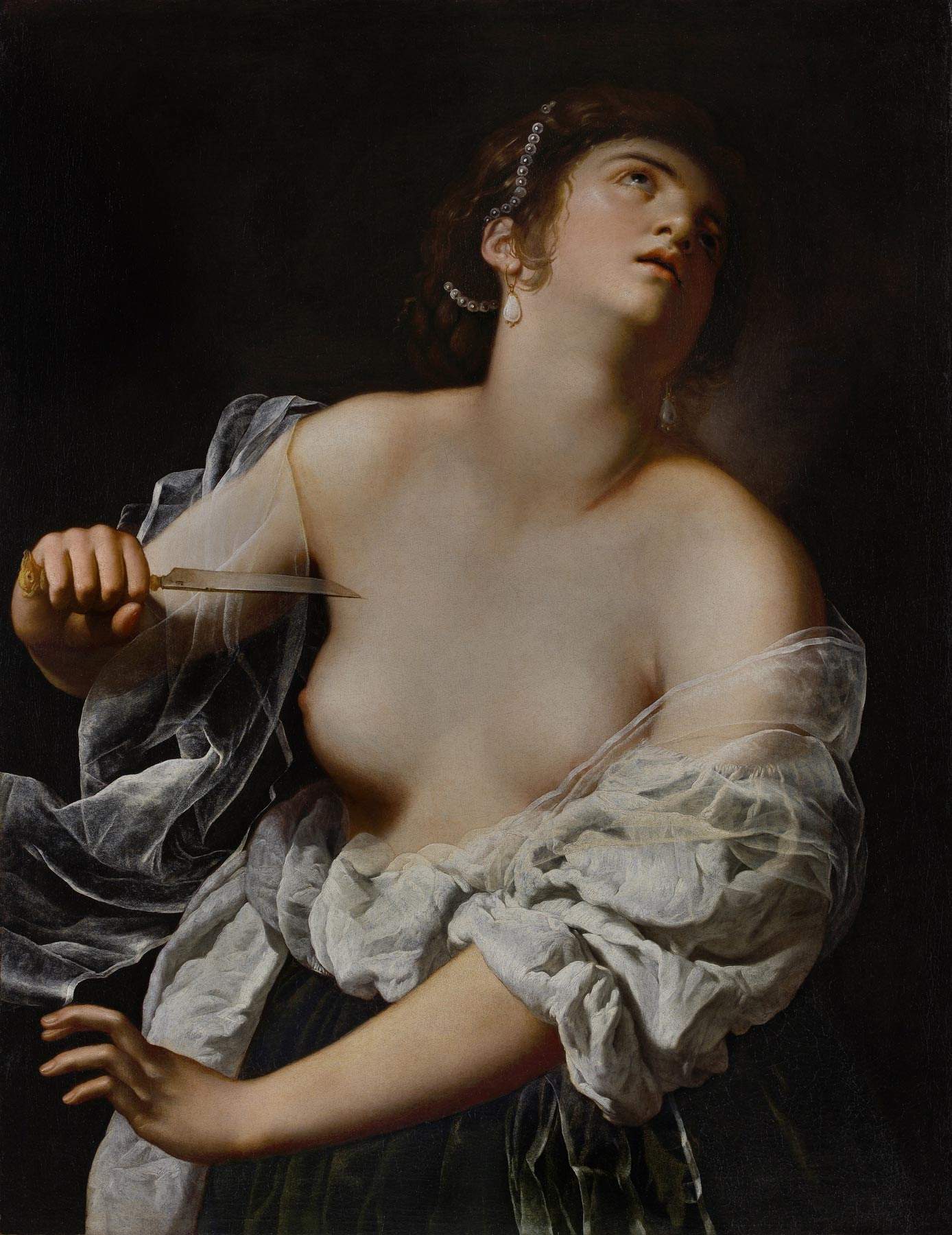The Getty Museum in Los Angeles acquires Artemisia Gentileschi's Lucrezia
The J. Paul Getty Museum in Los Angeles yesterday announced the acquisition of Artemisia Gentileschi ’s Lucrezia (Rome, 1593 - Naples, c. 1654), which re-emerged on the market in the summer of 2019 in France and then went to auction by ArtCurial in November, selling for €4.78 million, against an initial estimate of €600-800,000. The work was in a private collection in Lyon before being sold by ArtCurial. The subject depicted is the Roman heroine Lucretia, who committed suicide after being raped by Sextus Tarquinius, son of the last king of Rome, Tarquinius the Superbus: according to the story, the episode was later the cause of the uprising against the king, which led to the establishment of the republic. Lucretia, in the art of the Renaissance and Baroque ages, became an example of courage and self-sacrifice, and she is often depicted, as in the painting by Artemisia, as she is about to pierce her chest with a dagger, with her bare breasts.
“Although in her own time she was known as a very talented painter,” points out Timothy Potts, director of the Getty, "Artemisia suffered for a long time from the shadow of her more famous and celebrated father Orazio Gentileschi: of him, the Getty has two important works, Lot and the Daughters and the recently acquired Danae. We had to wait until the late 20th century to see a painstaking repositioning of Artemisia: from this time on, she became one of the most sought-after artists of the 17th century. Her recognition as a painter of powerful and dramatic historical subjects is also considerable because of the abuse and prejudice she suffered in her life, which is also evident in Lucrezia’s suicide, and other paintings in which the main protagonist is a violated or abused woman. Artemisia’s Lucretia will open, for our visitors, a window into the important issues of injustice, prejudice, and abuse that lie behind the seductive surface of her works."
The painting
The painting was first published at an exhibition at the Musée Rath in Geneva in 2004, and the record of Lucretia was curated by art historian Mauro Natale. Artemisia’s Lucrezia, Natale wrote, displays an expressiveness sustained by “a very sober palette and extraordinarily masterful work: the figure stands out from the gloomy background thanks to an amber light that strikes the young woman’s chest and arms. Here, the drawing of the figure is rendered through the juxtaposition of different color fields, according to a pictorial procedure similar to that which characterizes Caravaggio’s Roman works.” Her attitude “expresses at once resignation, determination and fear,” and the body is emphasized by a chiaroscuro that softens its forms and emphasizes its classical elegance.
Natale dated the work to 1630-1637, noting affinities with Neapolitan painting of the time but also with the works created in Rome by Simon Vouet, a painter Artemisia often looked to in the 1930s. There are also similarities that result from findings with works made by the Tuscan-born painter in precisely the fourth decaded el Seicento. Getty experts, however, place the date before about 1627: according to the U.S. museum, the painting may have been executed during Artemisia’s Venetian sojourn in the late 1620s, because of certain elements (such as the exuberant draperies, the very free brushstrokes, and the protagonist’s own features) that recall the women depicted by paintings by Titian and Veronese. According to the Getty, Lucrezia also reflects Artemisia’s contacts with foreign painters active in Venice in the 1920s, such as the Genoese Bernardo Strozzi, the French Nicolas Régnier, and the German Johann Liss.
Getty then adduces a further reason: in 1627 a pamphlet was printed in Venice that contained a number of poems dedicated to four paintings made by Artemisia in Venice (two for a self-portrait, one for a Susanna, one for a Sleeping Cupid, and three for a Lucrezia). The author of the booklet was probably the man of letters Giovanni Francesco Loredan, who was part of a group of writers, artists, musicians, librettists, and patrons who frequented the same circles as Artemisia at the time of her stay in Venice. According to the Getty, it is therefore highly likely that the Getty’s Lucrezia is the painting celebrated by the poems published in 1627.
“Thanks to the discovery of new documents and new paintings,” says Davide Gasparotto, senior curator of painting at the Getty Museum, "our understanding of Artemisia’s art has become much more complex and subtle over the past two decades. This recently rediscovered painting sheds new light on a pivotal and yet neglected moment in her career: a moment in which the painter is moving from the Caravaggism that marked her formative years to a more graceful and idealized manner that characterizes her maturity. Lucrezia is a powerful and effective example of Artemisia’s most significant genre, the depiction of female figures in motion deciding their fate; but with such lyrical and sophisticated expressiveness, dense impasto and vibrant brushstrokes, the painting also suggests new directions in her artistic itinerary."
The painting will be on view to the public when the Getty reopens in the coming weeks.
Pictured: Artemisia Gentileschi, Lucrezia (c. 1627; oil on canvas, 97 x 76 cm; Los Angeles, Getty Museum)
 |
| The Getty Museum in Los Angeles acquires Artemisia Gentileschi's Lucrezia |
Warning: the translation into English of the original Italian article was created using automatic tools. We undertake to review all articles, but we do not guarantee the total absence of inaccuracies in the translation due to the program. You can find the original by clicking on the ITA button. If you find any mistake,please contact us.



























